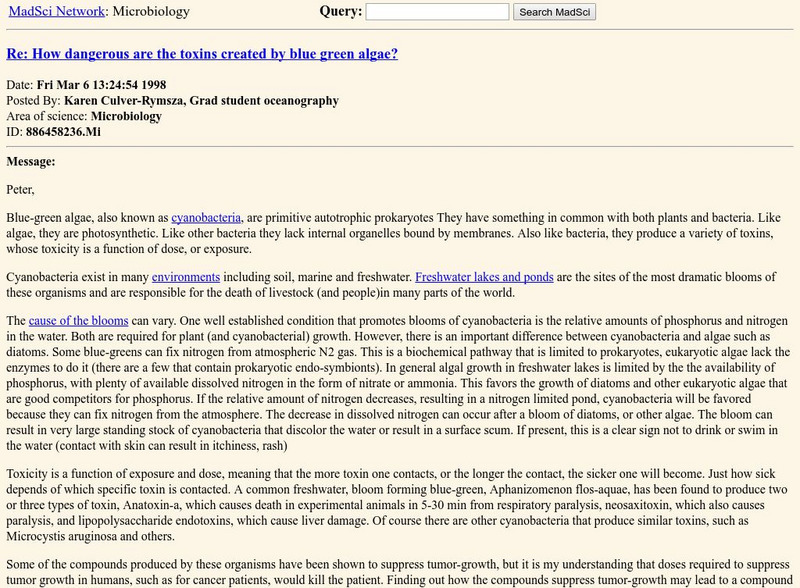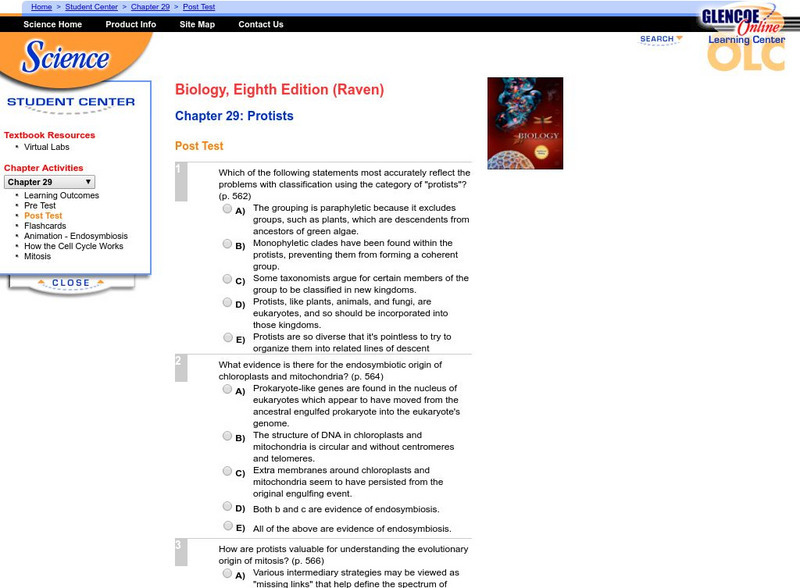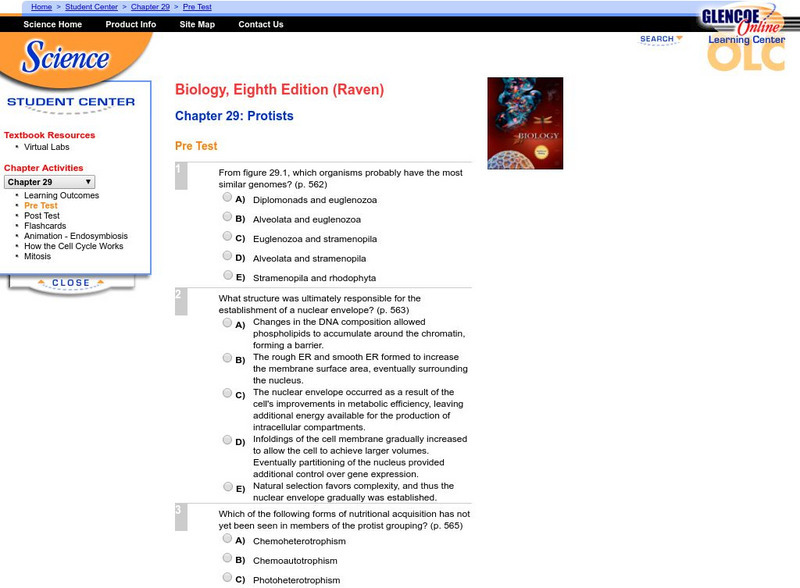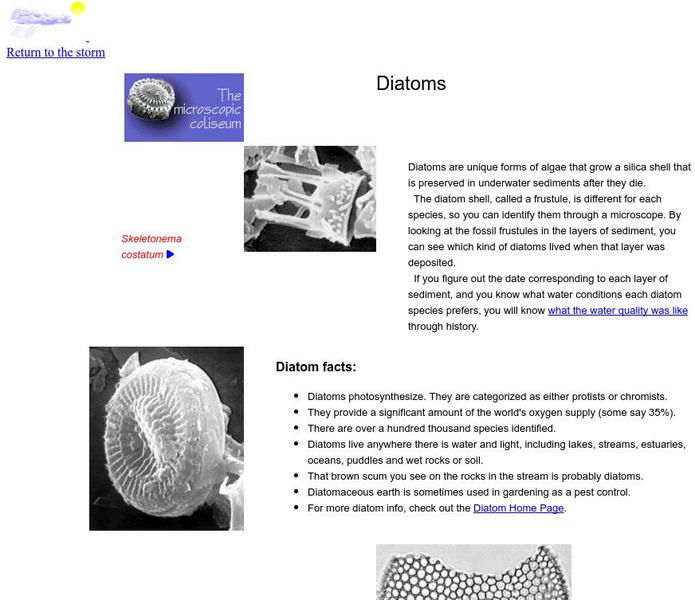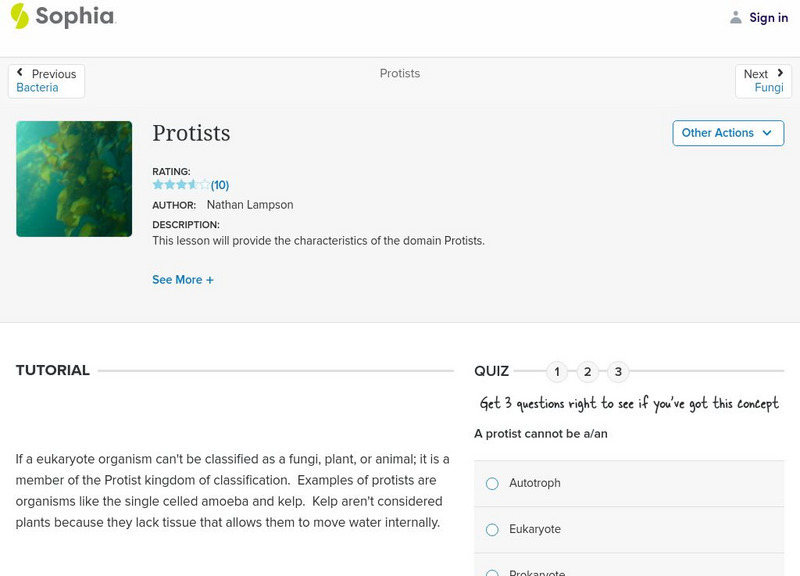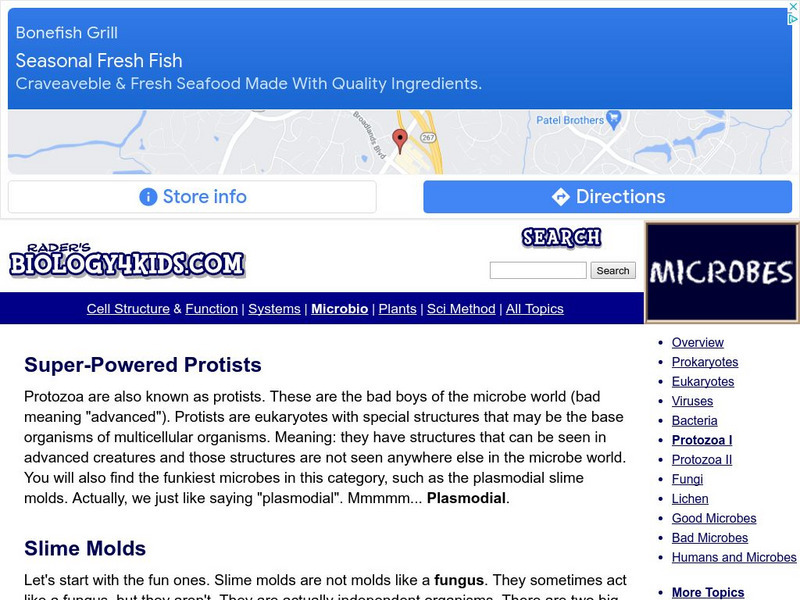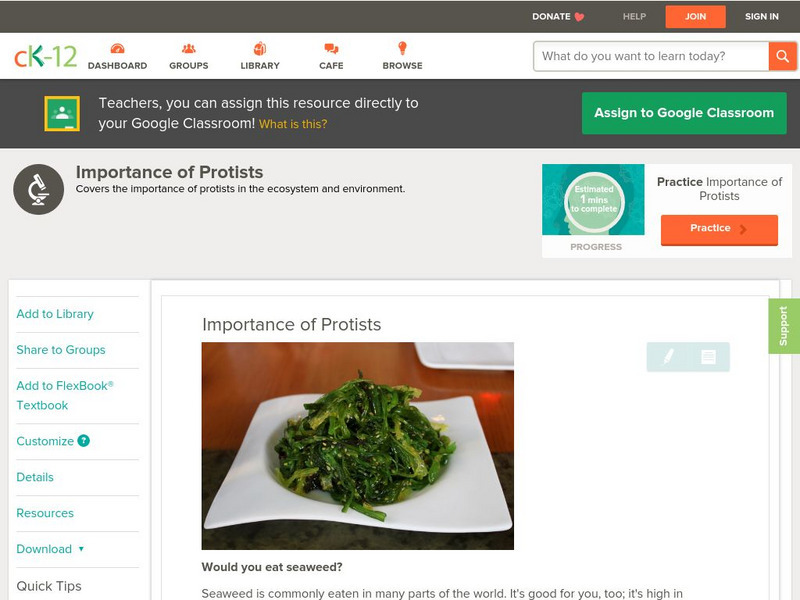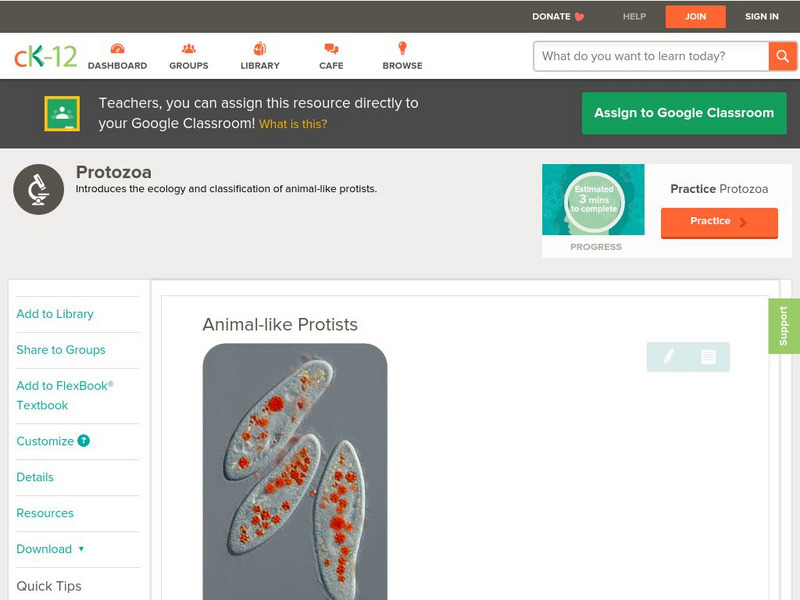MadSci Network
Mad Scientist Network: Toxins of Blue Green Algae
Discusses the dangers of blue-green toxins on humans.
Michigan State University
Michigan State University: Digital Learning Center for Microbial Ecology: The Curious Microbe
This interesting site focuses on unusual microbes that inhabit an extreme environmental niche on our planet. Individual articles are written in a tone suitable for general audience.
McGraw Hill
Mc Graw Hill: Pre Test: Protists
Find out how much you know about protists by taking this pre test.
McGraw Hill
Mc Graw Hill: Pre Test: Protist
Find out what you know about protists by taking this pre test.
Biology Corner
Biology Corner:paramecium Coloring
Learn all about Paramecium Coloring in this article and diagram.
Other
Vhi Healthcare: Blue Green Algae
What is blue-green algae? Is blue-green algae nutritious? This site answers these questions as well as the use of algae in the treatment of diseases.
Microscopy UK
Microscopy Uk: Polysiphonia a Red Algae
Defines red algae. Also gives the habitat, reproduction cycle, and lists different species.
Other
The Krib: Control of Red Algae in Freshwater Aquarium
Causes for red algae in the aquarium, eliminating red algae, the role of carbon dioxide, and algae eaters.
Other
Aquascope: Encrusting Red Algae
Habitat, appearance, and classification of red algae. Growth of red algae.
Middle School Science
Protist Lab
In this concise lab exercise, you will examine protists under the microscope, see examples of different protist types, and compare modes of locomotion.
Sophia Learning
Sophia: Protists
This lesson will provide the characteristics of the domain Protists.
Sophia Learning
Sophia: Three Domains/ Five Kingdoms /Taxonomy: Lesson 3
This lesson presents the organizational categories of living things. It is 3 of 3 in the series titled "Three Domains/ Five Kingdoms /Taxonomy."
Biology 4 kids
Biology4 Kids: Super Powered Protists
Meet the "big guys" on campus. Protists are the more advanced types of eukaryotes that are unique such as amoeba and slime molds.
Biology 4 kids
Biology4 Kids: And Still More Protozoa
An overview of the structure of protozoa. Identify those protists with hair or tails as well as those which cannot live on their own and require a host.
Sophia Learning
Sophia: Three Domains/ Five Kingdoms /Taxonomy: Lesson 2
This lesson presents the organizational categories of living things. It is 2 of 3 in the series titled "Three Domains/ Five Kingdoms /Taxonomy."
CK-12 Foundation
Ck 12: Life Science: Importance of Protists
[Free Registration/Login may be required to access all resource tools.] Humans could not live on Earth if it were not for protists. Why? Protists produce almost one-half of the oxygen on the planet, decompose and recycle nutrients that...
CK-12 Foundation
Ck 12: Life Science: Animal Like Protists
[Free Registration/Login may be required to access all resource tools.] Animal-like protists are called protozoa. Protozoa are single-celled eukaryotes that share some traits with animals. Like animals, they can move, and they are...
CK-12 Foundation
Ck 12: Biology: Molds
[Free Registration/Login may be required to access all resource tools.] Describes different types of fungus-like protists.
CK-12 Foundation
Ck 12: Life Science: Fungus Like Protists
[Free Registration/Login may be required to access all resource tools.] Fungus-like protists share many features with fungi. Like fungi, they are heterotrophs, meaning they must obtain food outside themselves. They also have cell walls...
Ducksters
Ducksters: Biology for Kids: Protists
On this site, investigate the organisms called protists in the science of biology including types, what they eat, algae, slime molds, and amoebas.
Other
Mbari: Rhodophyta, Red Algae
This site from the Monterey Bay Aquarium Research Institute defines red algae, habitat, orders and genera, and methods. The information that is presented is somewhat brief, but factual, and riddled with links to additional information.
Other
Net Pets: Red Slime Algae
Describes the reproduction of red algae and the structure of red algae.
Smithsonian Institution
National Museum of Natural History: Economic Uses of Algae
Today, various species of marine algae provide not only food but also extracts used in numerous pharmaceutical, cosmetic, and industrial applications.


